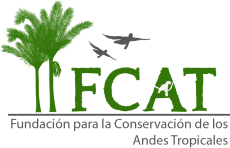Another summer has come and gone – lab members have travelled far and wide for field work and conferences, and have now returned to New Orleans for the fall semester.
We are excited to welcome our two new Ph.D students, John Jones and Sarah Khalil!
John joined the lab with funding from a Louisiana Board of Regents Fellowship. He got an early start on research with a preliminary field experience with fairy wrens in Australia and Papua New Guinea this past summer. Now he is adjusting to the heat of New Orleans while preparing to conduct more field work in Papua New Guinea during the start of the spring semester.
Sarah is funded by an NSF Graduate Research Fellowship. She returned at the start of the summer from a field season in Kenya, finishing her research at Columbia University studying superb starlings. She later joined the IRES crew for a preliminary field season in Australia, and now is excited to be in New Orleans where she gets to escape the cold winters of New York.
Sam returned from the field in Australia, finishing her last field season while leading the NSF IRES crew. While down under, she was awarded best student oral presentation at the Queensland Ornithological Conference for her presentation on non-breeding season space use in male fairywrens.
Brock completed another field season in the northern Gulf, tracking a cohort of breeding brown pelicans while continuing long-term demographic surveys on Raccoon Island.
Erik returned from Papua New Guinea and spent the remainder of the summer digging into analyzing his data from the field season.
After finishing up their respective field seasons, the bird side of the lab all met up at the end of the summer in Washington D.C. for the North American Ornithological Conference (NAOC 2016). The lab was well represented at the conference – Sam presented work on how the environment influences sociality in fairywrens, Brock presented some of his preliminary findings, Erik presented his work on the White-shouldered fairy wrens, and John presented on his previous master’s work.
Luke and Jordan’s study “Negative frequency-dependent selection for rare genotypes promotes genetic diversity of a tropical palm” was accepted for publication in Ecology Letters (link to PDF)! Another paper on the “Diversity of palm communities at different spatial scales in a recently fragmented tropical landscape” (Browne and Karubian 2016) was published in the Palms – emblems of tropical forests special issue of the Botanical Journal of the Linnean Society. Luke finished up his last field season of his dissertation this summer with Tulane undergrad Mike Mahoney, hiked the Camino de Santiago in Spain, and presented at the Ecuadorian Ornithology Congress with colleagues from Ecuador.
In New Orleans, Zoë completed a pilot project examining neutral genetic differentiation of 8 populations across Ecuador on both sides of the Andes. She is now preparing her prospectus and plans to be in the field during the spring semester to do extensive sampling of Oenocarpus bataua along both sides of the Andes.
Jordan had an active summer, with international travel to Australia where he helped to provide training to our current group of NSF-funded IRES students and to Ecuador, where he gave a presentation at the V Ecuadorian Ornithology Congress in Zamora. He also spent time working with Renata Ribeiro and Stephanie McClelland studying mockingbirds right here in New Orleans. He published a paper (Karubian et al. 2016) with Luke Browne, Malinda Chambers (a former Tulane undergrad and 4+1 MS student), and local Ecuadorian residents in the Botanical Journal of the Linnean Society.



